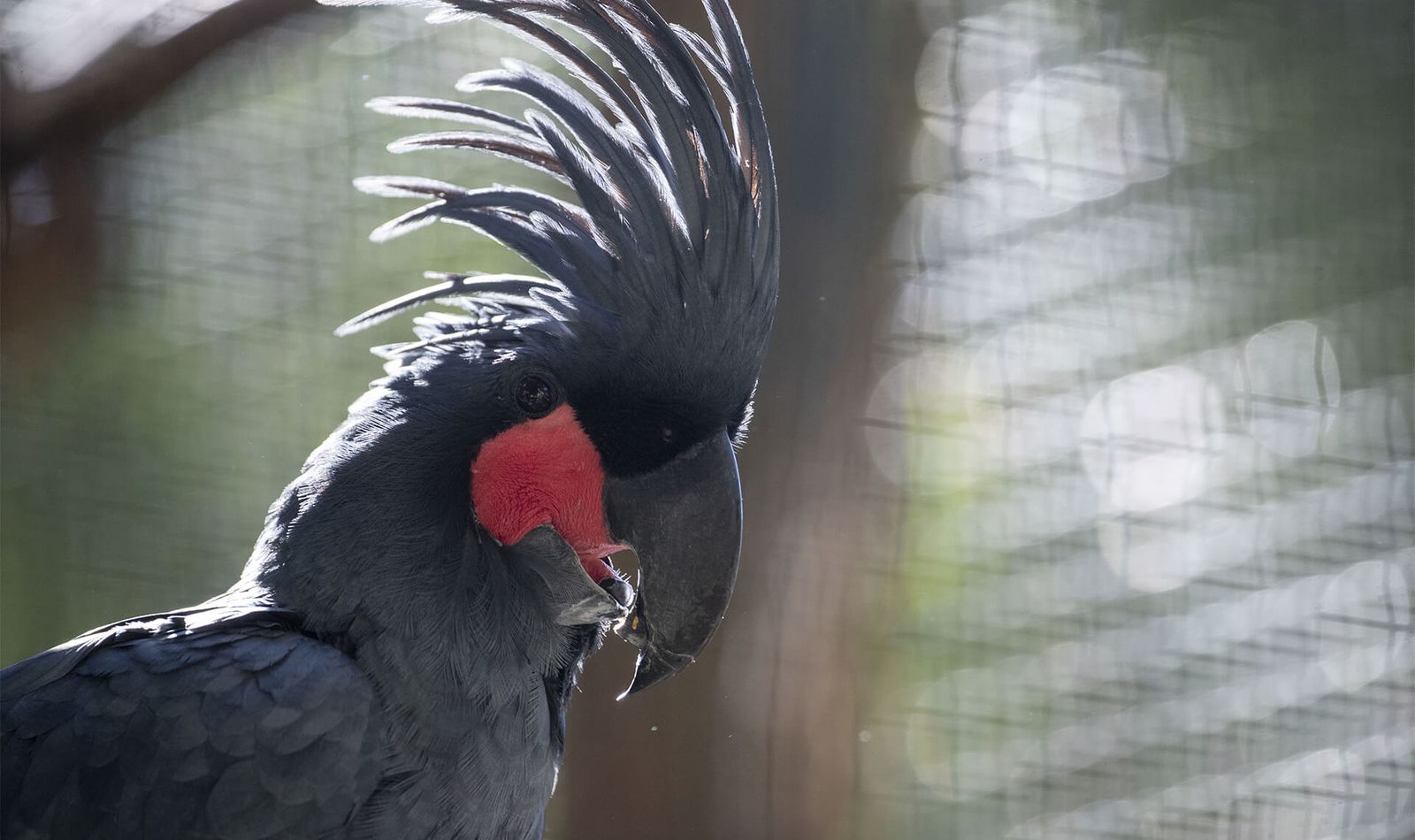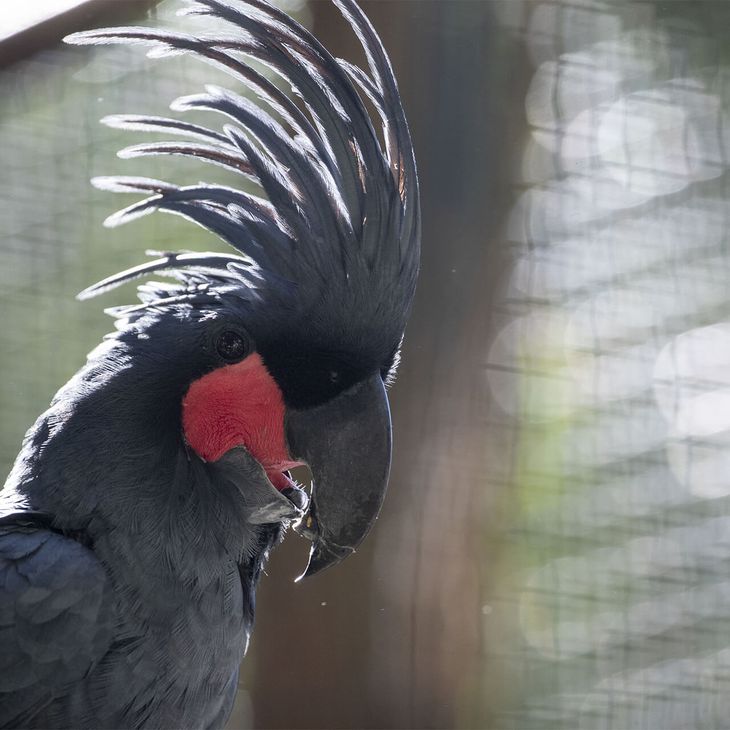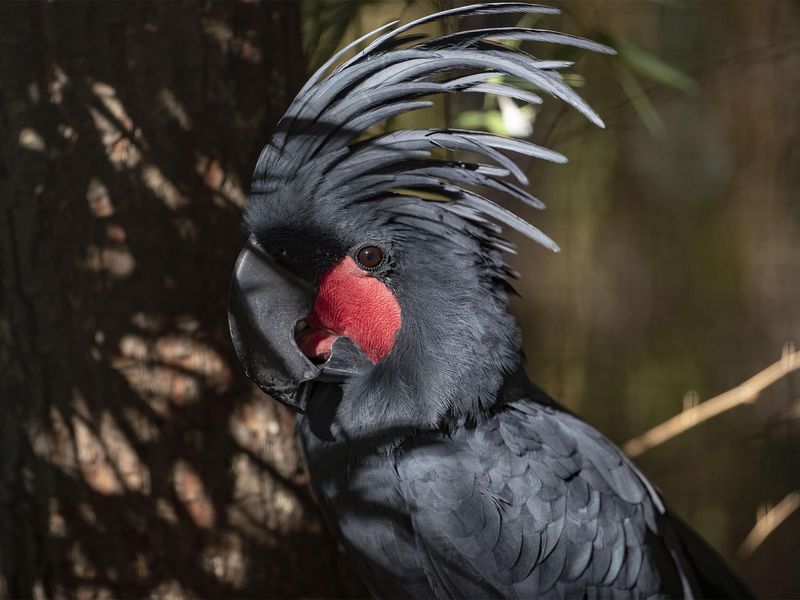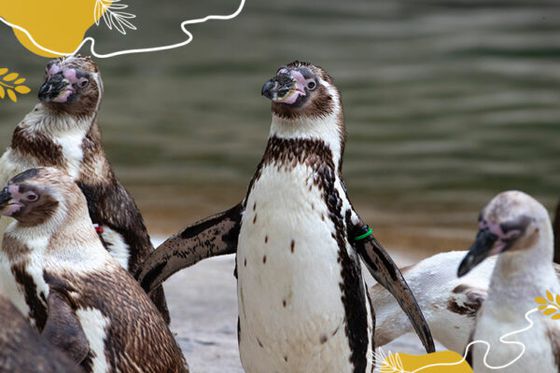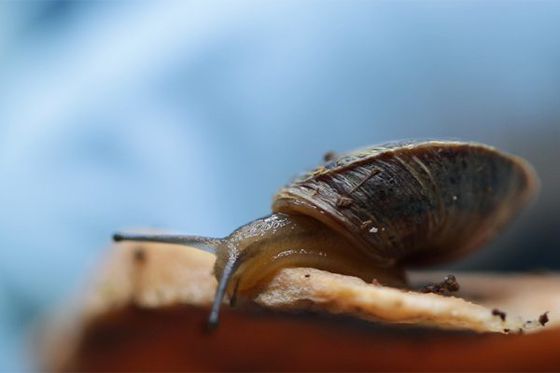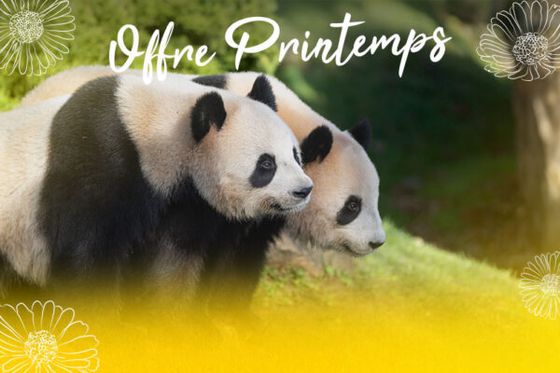« This crested parrot is able to raise the feathers on its head »
Palm cockatoo or great black cockatoo
A territorial bird with a unique display.
The palm cockatoo is part of the Psittacidae family and is also called the “great black cockatoo” because of its charcoal-coloured plumage. In contrast, this bird’s featherless cheeks are bright red and can change colour depending on the bird’s mood, stress levels, or health. Its black beak is hooked and relatively short which allows it to crack seeds and nuts, which it is very fond of. This crested parrot is able to raise the feathers on its head and often does so in the morning, during territorial displays. This morning routine consists of vocalisations and striking hollow trunks with a nut, a stone, or a stick, with wings outstretched!
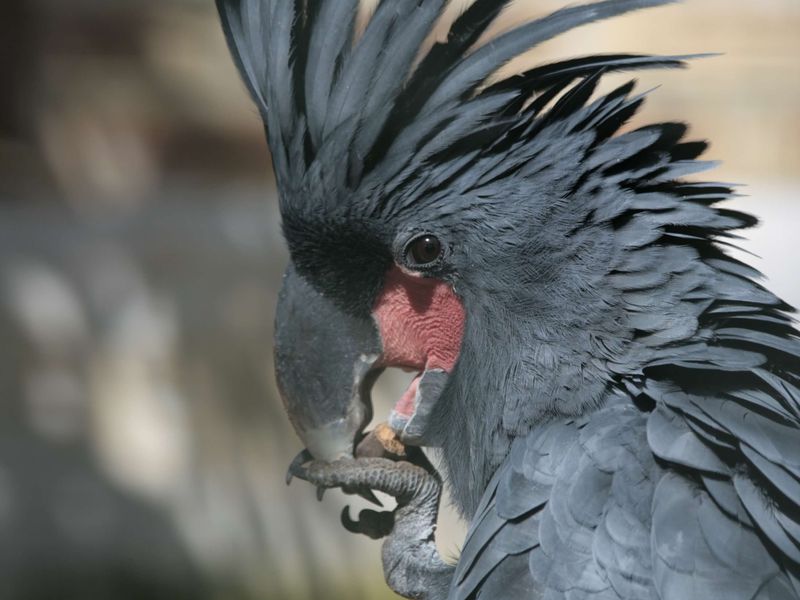
Did you know?
New leak for one of our palm cockatoo
A two-in-one video
In this new “Un Œil en Coulisse”, head to the great black cockatoo aviary to experience 2 special events: an enrichment offered to cockatoos and the installation of a new prosthesis on the beak of one of the females!
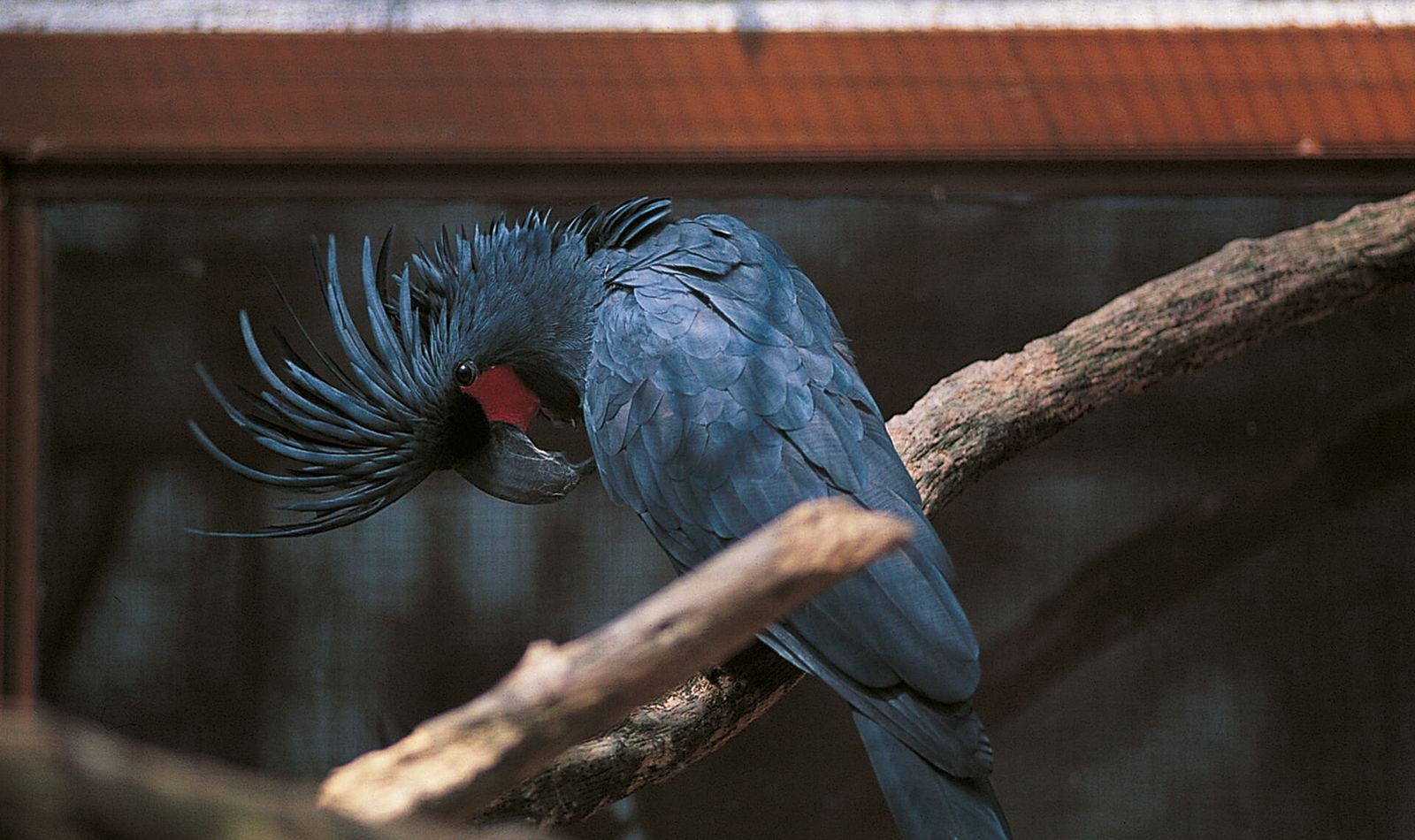

Sponsor Beauval’s animals
Establish a strong bond with your favourite animal whilst supporting conservation programmes through the Beauval Nature association!
Least concern
Learn more about the species
-
Frugivore, GranivoreDiet
-
30 to 35 daysIncubation
-
1 eggClutch size
-
Wooded savannahs, Tropical forestsHabitat
Australasia’s largest parrot
A sociable animal
Reproduction and nesting

Take full advantage of the experience thanks to our mobile application!
Find out more
